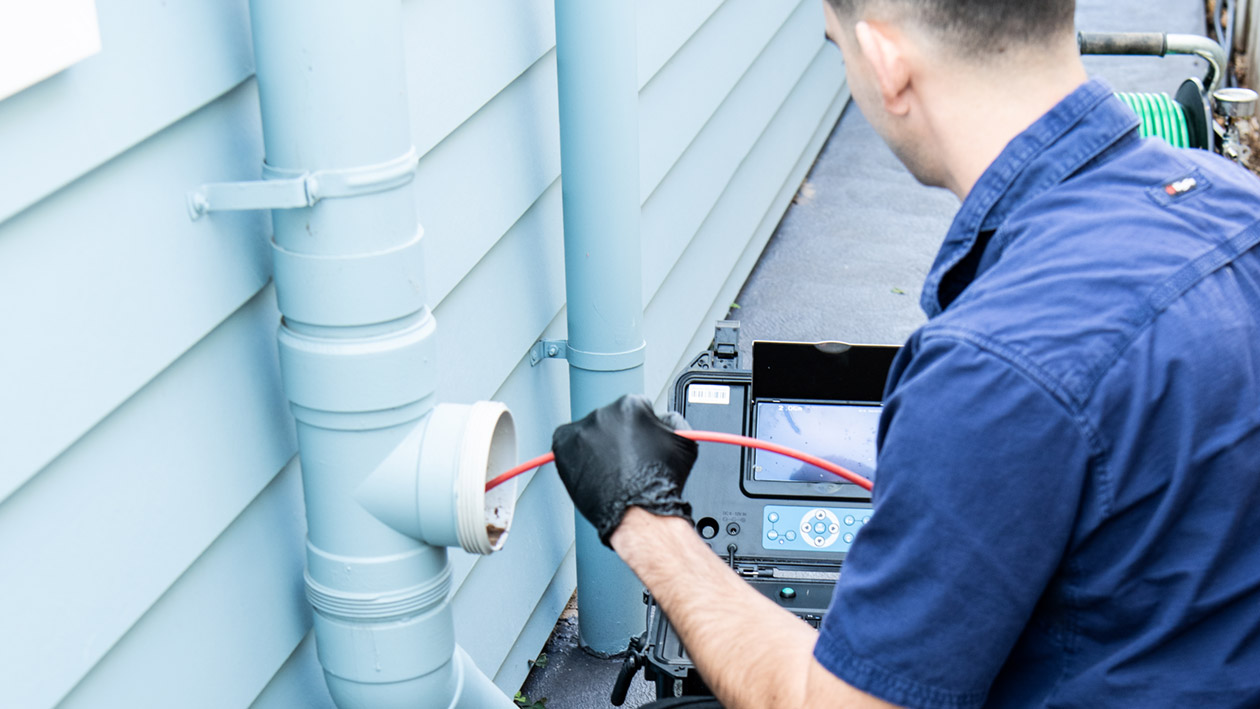If you’ve ever stood in your backyard watching water pool around a blocked outdoor drain, you’re definitely not alone. It’s one of those frustrating problems that seems to happen at the worst possible moment, usually right before a big storm or when you’ve got guests coming over. The good news? Some outdoor drain blockages can be sorted without calling in the professionals, and I’ll walk you through exactly how to tackle this messy job step by step.
Understanding Your Outdoor Drainage System
Before you roll up your sleeves, it’s worth understanding what you’re dealing with. Your outdoor drains are the unsung heroes of your property’s drainage system, working tirelessly to channel water away from your home and prevent flooding. These drains can be stormwater drains that handle rainwater runoff, or overflow relief gullies that prevent sewage backing up into your house when there’s a blockage downstream.
Most Australian homes have what’s called an overflow relief gully (ORG) – that’s the drain you’ll often see outside that looks like it’s doing nothing until something goes wrong. When your indoor drains are working fine but this outdoor drain is overflowing, it usually means there’s a blockage between that point and the main sewer. Understanding this can save you time and help you tackle the problem more effectively.
What’s Actually Blocking Your Drain?
The culprits behind blocked outdoor drains are pretty predictable. Leaves, dirt, and sticks are the usual suspects, especially after storms when wind can blow debris into gutters and drains. Garden debris builds up over time if left unmaintained, and even grass or weeds can grow if you’ve ignored the problem for too long.
But it’s not just outdoor debris causing havoc. What goes down your indoor drains eventually ends up affecting your outdoor system too. Food waste, oils, and fats from the kitchen can solidify and create blockages. Hair from bathroom drains bands together with soap and shampoo to form stubborn clogs. Even something as simple as too much toilet paper or sanitary products can contribute to the problem.
Tree roots present a particularly challenging issue for many Australian homeowners. These persistent invaders seek out moisture and nutrients, infiltrating even the smallest cracks in underground pipes. Once they’re in, tree roots don’t stop growing, they can cause significant damage over time and create blockages that are much harder to clear.
Gathering Your Tools
Right, let’s get practical. Before you start, you’ll need to gather some basic tools and materials for clearing the drain. Most of these you probably already have lying around. You’ll want a sturdy pair of gloves – trust me, you don’t want to be handling drain water with bare hands. Grab a bucket for collecting debris and dirty water, plus a broom for clearing around the drain area.
A garden hose is essential for flushing the system, and you might want to have some pliers handy for grabbing stubborn debris. If the blockage is more serious, you’ll need either a drain snake (available from Bunnings for around $20-40) or even a drain bladder that uses water pressure to clear clogs.
Step-by-Step Clearing Methods
Start with the Basics
Put those gloves on first, this isn’t negotiable. Next, locate your drain’s inspection points. Look for an overflow relief gully with a grate cover, or a stormwater inspection point with a PVC cap you can unscrew. Use your broom to clear any visible debris from around the drain opening so you don’t accidentally push more rubbish into the system.
Remove What You Can See
If you can spot the obstruction, start by removing any visible debris by hand. Take off the drain cover and use pliers to pull out leaves, small sticks, or other debris you can reach. For larger items that won’t come out with pliers, carefully use your gloved hands to remove loose material. Sometimes this simple step is all you need.
The Boiling Water Method
This is your first line of attack for more stubborn blockages. Boil up a large kettle of water and pour it slowly down the drain. The hot water helps melt away grease and loosen debris that’s causing the blockage. It’s simple, it’s cheap, and it often works brilliantly for minor clogs.
Natural Cleaning Solutions
If boiling water doesn’t do the trick, try the classic baking soda and vinegar combination. Pour one cup of baking soda down the drain, followed by one cup of vinegar. Cover the drain opening with a plug or cloth and let the mixture fizz for at least 30 minutes. The chemical reaction helps break down organic matter and can shift blockages that hot water alone can’t handle. Finish by flushing with more boiling water.
Bring Out the Heavy Artillery
When gentle methods fail, it’s time for a drain snake. These flexible tools can navigate through your pipes to break up blockages mechanically. Insert the snake until you feel resistance, then work it back and forth to break up the clog. You might need to spin the auger to grab onto debris, then start plunging to dislodge the blockage. Keep some hot water running while you work to help flush away loosened material.
For really stubborn blockages, consider a drain bladder. These clever devices expand inside the pipe and use water pressure to force the blockage through. Just remember you’ll need two people for this job, one to control the water flow and another to manage the bladder.
When Tree Roots Are the Problem
Tree root blockages are a different beast altogether. If you’re in one of Australia’s leafy suburbs, this could well be your issue. Mature trees, particularly those planted too close to your home, can send roots seeking moisture straight into your pipes. Sydney Water actually recommends planting new trees at least 6 metres away from plumbing services to prevent this problem.
Signs of root intrusion include slow-draining fixtures throughout your home, frequent toilet blockages, gurgling sounds from drains, and unpleasant odours. You might even notice unusually green patches in your yard where roots have created leaks that are fertilising the grass above.
For minor root problems, you can try mechanical removal with a drain snake or root cutter. However, significant root intrusion usually requires professional intervention with specialised equipment like high-pressure water jetters or root cutting machines. Don’t feel bad about calling in the pros for this one, tree roots can cause serious damage if not handled properly.
Knowing When to Call a Plumber
Look, I’ll be honest with you, sometimes you need to know when you’re beaten. If you’ve tried the basic methods and the blockage keeps coming back, or if you’re dealing with sewage backing up rather than just slow drainage, it’s time to call a plumber. The same goes if you suspect tree roots are involved or if the blockage is too far down the line for your tools to reach.
⏰ Available 24/7 – Whether it’s a slow-draining gutter, blocked drain or a full-blown sewer backup, Dylan’s team will be there faster than you can say “stubborn blockage”. 📞 Call 0411 438 760 for a free quote.



